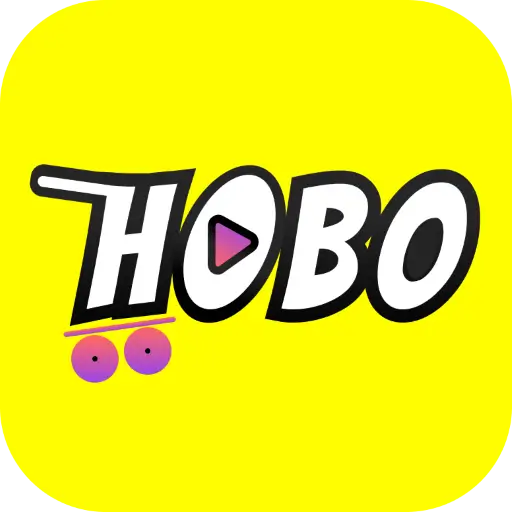When comparing Influencer Marketing, Instagram vs YouTube, the outcomes can vary widely based on audience preferences, content types, and campaign objectives. Each platform serves different purposes, and brands often face a critical choice in deciding where to invest their marketing resources. By understanding the nuances of social media influencer marketing, this article will help you craft strategies that align with your goals and ensure measurable success.
Introduction to Influencer Marketing on Instagram vs YouTube
When engaging in a discussion about Influencer Marketing, specifically Instagram versus YouTube.It is crucial to recognize that these platforms each serve different audience behaviors and present unique benefits. Instagram, for instance, prioritizes visually striking content; however, YouTube thrives on comprehensive video marketing results. Because of this, choosing the appropriate platform necessitates a strategic grasp of user demographics and engagement metrics, although it can be challenging at times.
1. Understanding the Platforms
Instagram: A Visual Playground
Instagram flourishes on what can be described as snackable posts, which makes it an ideal platform for brands aiming to rapidly enhance their visibility. Features such as reels, stories, and shoppable posts not only enrich the user experience, however, they also drive significant engagement. Because of this, Instagram has emerged as a favored option for awareness campaigns, although some may argue that its effectiveness can vary.
YouTube: A Hub for In-Depth Storytelling
Unlike Instagram, YouTube is a platform for immersive content. With the ability to host video tutorials and long-form narratives, YouTube allows brands to delve deeper into product features, offering richer video marketing outcomes. Moreover, its powerful SEO potential ensures your content remains relevant for years.
2. Audience Behavior and Demographics
Instagram’s Target Audience
Instagram attracts a predominantly younger demographic particularly those aged 18–34. This audience seeks instant gratification, which makes it well-suited for visual storytelling. However, Indian users frequently pursue trends in fashion, lifestyle, and food thus ensuring considerable engagement with social media influencer marketing campaigns. Although this engagement is noteworthy, it is essential to recognize the nuances of audience preferences.
YouTube’s Viewer Spectrum
YouTube on the other hand) attracts a more diverse audience; ranging from teenagers to senior citizens. The platform caters to varied interests, however, it is particularly strong among regional language speakers in India. Because of this, brands can engage effectively through localized content. This highlights the importance of tailoring digital influencer strategies, although it depends on audience segmentation. Instagram attracts a predominantly younger demographic particularly those aged 18–34. This audience seeks instant gratification, which makes it well-suited for visual storytelling. However, Indian users frequently pursue trends in fashion, lifestyle, and food thus ensuring considerable engagement with social media influencer marketing campaigns. Although this engagement is noteworthy, it is essential to recognize the nuances of audience preferences.
3. Content Types and Engagement Rates
Instagram’s Snackable Content
- Strengths – The prevalence of short-form videos and visually appealing images dominate Instagram. However, this platform thrives on its ability to engage users quickly. Although many find this format effective, it can also lead to a superficial understanding of content. Because of the emphasis on aesthetics, users may overlook deeper messages. Thus, the balance between form and substance becomes essential.
- Challenges– The lifespan of content is often shorter than one might expect. However, this phenomenon raises important questions about sustainability and engagement. Although some content may go viral, it quickly fades from public consciousness. This is particularly true in an era characterized by rapid information dissemination and consumption. Because of this, creators must continually innovate their strategies to maintain relevance.
- Best for- fostering elevated social engagements and generating viral instances. However, one must consider the dynamics of online platforms, because they can significantly influence the outcome. This, in turn, allows for more effective reach; it is crucial to understand the audience. Although challenges may arise, the potential for success remains high.
YouTube’s Long-Form Appeal
- Strengths – YouTube enables brands to delve into intricate storytelling and comprehensive product reviews. However, this platform offers unique opportunities to engage audiences; it fosters a connection that traditional media often lacks. Although many brands utilize various social media channels, YouTube stands out because of its visual and auditory elements. This makes it an effective tool for conveying messages, but success often depends on the quality of content produced.
- Challenges – production is often both time-intensive and costly. However, these obstacles should not deter one from pursuing their goals. Although the financial burden may seem overwhelming at times, this experience can yield significant rewards. Because of the complexities involved, careful planning is essential, but it is important to remain adaptable to changing circumstances.
- Best for : educating audiences; this, in turn, fosters long-term trust. However, it is crucial to understand that the process may be gradual. Although immediate results can be enticing, sustained engagement is often more valuable. Trust develops slowly, primarily because it requires consistent communication and authenticity. But, once established, the relationship can yield significant benefits.
The engagement levels on Instagram (as opposed to YouTube) vary greatly. Instagram, for example, produces quick clicks and likes; however, YouTube fosters deeper viewer connections because of its extended viewing times. This difference is important to grasp, although both platforms fulfill distinct roles in the world of social media.

Amplify Your Brand,
One Influence at a Time.
4.Campaign ROI and Brand Visibility
ROI on Instagram Campaigns
Instagram’s tools such as shoppable posts and reels facilitate the measurement of conversion metrics. This platform is particularly advantageous for awareness campaigns targeting younger demographics. However, the return on investment (ROI) could be diminished for products requiring substantial financial input, because it primarily emphasizes impulse-driven purchases. Although this method engages users effectively, it may not yield the desired results for all types of products.
ROI on YouTube Campaigns
Instagram’s tools such as shoppable YouTube on the other hand offer superior returns for brands that are investing in high-value products. Its in-depth content not only builds trust but also leads to higher-quality leads. Furthermore, its analytical tools enable marketers to evaluate ad spend efficiency and optimize campaigns effectively; however, this requires a nuanced approach. Although many platforms provide similar services, YouTube stands out because of its unique capabilities. Posts and reels facilitate the measurement of conversion metrics. This platform is particularly advantageous for awareness campaigns targeting younger demographics. However, the return on investment (ROI) could be diminished for products requiring substantial financial input, because it primarily emphasizes impulse-driven purchases. Although this method engages users effectively, it may not yield the desired results for all types of products.
5. Trends in Digital Influencer Strategies
In 2024, social media influencer marketing is seeing exciting trends:
Instagram Trends
AI-driven algorithms which are increasingly sophisticated) ensure a highly targeted reach. However, reels and carousel posts continue to dominate as the preferred formats for audience engagement; this is evident in numerous studies. Although these formats are popular, their effectiveness may vary depending on the target demographic, but they remain crucial for maximizing interaction. Because of this, content creators must adapt their strategies accordingly.
YouTube Trends:
Live streams, vernacular or regional) content and long-form podcasts have been gaining significant popularity, particularly in India’s Tier 2 and Tier 3 cities. However, this growth can be attributed to various factors, including increased internet accessibility and a desire for diverse narratives. Although some may argue that traditional media still holds sway, the shift toward these formats is undeniable. This transformation reflects changing consumer preferences and it suggests a broader trend in media consumption. But, one must consider the implications of such a shift in content creation and distribution.
Both platforms are undergoing evolution, which is creating numerous opportunities for brands to effectively leverage digital influencer strategies. However, this transformation is not without its challenges. Although the growth potential is significant, brands must navigate the complexities of the digital landscape. Because of this, careful planning and execution become paramount. Additionally, as these platforms continue to develop, the strategies employed may need to adapt accordingly.
Challenges and Opportunities in Social Media Influencer Marketing
Challenges
- Instagram – which is a widely used platform: Frequent algorithm updates can significantly reduce organic reach. This makes paid promotions essential for follower growth; however, some users may find this change frustrating. Although organic engagement is still valuable, the reliance on paid strategies has increased. But, because of these updates, understanding how to navigate the platform effectively becomes crucial for success.Both platforms are undergoing evolution, which is creating numerous opportunities for brands to effectively leverage digital influencer strategies. However, this transformation is not without its challenges. Although the growth potential is significant, brands must navigate the complexities of the digital landscape. Because of this, careful planning and execution become paramount. Additionally, as these platforms continue to develop, the strategies employed may need to adapt accordingly.
- YouTube – a platform known for its vast reach high production costs and heightened competition among creators may, however, hinder smaller brands. This is particularly concerning because smaller entities often lack the resources (both financial and technical to compete effectively. Although they bring unique content, the barriers to entry can be significant. Indeed, many smaller brands struggle to gain visibility, but perseverance is key.
Opportunities
- Instagram – a social media platform has become a powerful tool for brands; by leveraging features such as polls, quizzes and stickers, they can and often do increase social interactions significantly. However, this strategy is not without its challenges. Although engaging content is crucial, brands must also ensure they resonate with their audience. This balance is delicate, but it can lead to impressive results if executed well. Because of these dynamics, understanding the audience’s preferences becomes essential for success.
- YouTube – is a prominent platform Collaborating with regional influencers can significantly enhance one’s online presence in niche markets. However, this strategy is not without its challenges; the effectiveness may vary depending on the influencer’s reach. Although it can lead to increased visibility, brands must be cautious, because not all influencers align with their values. This engagement, therefore, requires careful consideration (and research) to ensure a successful partnership.
Conclusion
In conclusion: the discourse surrounding Influencer Marketing, Instagram vs. YouTube, ultimately hinges on your brand’s objectives. If you seek immediate visibility and trend-driven campaigns, Instagram is the preferred choice. However, if your focus lies on trust and comprehensive storytelling, YouTube presents unparalleled video marketing outcomes. Although both platforms can yield exceptional results, they must be employed strategically. This can significantly impact your overall success.
Why Hobo.Video Is the Perfect Partner for Influencer Marketing
In conclusion: the discourse surrounding Influencer Marketing, Instagram vs. YouTube, ultimately hinges on your brand’s objectives. If you seek immediate visibility and trend-driven campaigns, Instagram is the preferred choice. However, if your focus lies on trust and comprehensive storytelling, YouTube presents unparalleled video marketing outcomes. Although both platforms can yield exact Hobo.Video, we (specialize) in creating personalized campaigns for both Instagram and YouTube. Our platform connects brands with influencers who provide meaningful results; this occurs whether through quick, snackable posts on Instagram or more detailed video tutorials on YouTube. We ensure: however, that each campaign is tailored to meet the specific needs of our clients because we understand the importance of engagement in today’s digital landscape. Although the strategies may differ, the ultimate goal remains the same to captivate and convert audiences effectively. Optional results must be employed strategically. This can significantly impact your overall success.
- Tailored Strategies – Customized campaigns for better engagement rates and brand visibility.
- Data-Driven – Decisions: Ensuring optimal ROI by leveraging analytics.
- Wide Network:- From micro-influencers to celebrities, our network ensures the perfect match for your needs.
If you are a brand looking for unconventional hypergrowth. Connect with us Here

